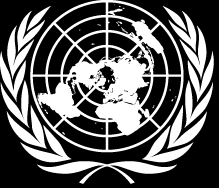DesInventar Sendai is a new version of the well-tested, widely used software that implements all the Indicators and data required for the Monitoring of Targets A to D of the Sendai Framework for Disaster Risk Reduction, which correspond to parallel Sustainable Development Goals (SDG's) indicators from Goals 1, 11 and 13.
Among many other new features, it also allows for the definition and use of Sendai Framework metadata to describe several indicators and allow a finer desaggregation of data.
Background
The Sendai Framework for Disaster Risk Reduction, the first of the world's post-2015 development agreements, was adopted in March 2015. It was followed by three other major intergovernmental accords, the July 2015 Addis Ababa Action Agenda on financing for development; Transforming our World: the 2030 Agenda for Sustainable Development, adopted in September 2015; and the December 2015 Paris Agreement on climate change.
The Sendai Framework is a 15-year, voluntary, non-binding agreement which recognizes that the State has the primary role to reduce disaster risk but that responsibility should be shared with other stakeholders including local government, the private sector and other stakeholders. It aims for the following outcome:
The substantial reduction of disaster risk and losses in lives, livelihoods and health and in the economic, physical, social, cultural and environmental assets of persons, businesses, communities and countries.
On 1 January 2016, the 17 Sustainable Development Goals (SDGs) of the 2030 Agenda for Sustainable Development — adopted by world leaders in September 2015 at an historic UN Summit — officially came into force. Over the next fifteen years, with these new Goals that universally apply to all, countries will mobilize efforts to end all forms of poverty, fight inequalities and tackle climate change, while ensuring that no one is left behind.
The Sendai Framework is the successor instrument to the Hyogo Framework for Action (HFA) 2005-2015: Building the Resilience of Nations and Communities to Disasters. It is the outcome of stakeholder consultations initiated in March 2012 and inter-governmental negotiations held from July 2014 to March 2015, which were supported by the UNDRR upon the request of the UN General Assembly.
UNDRR has been tasked to support the implementation, follow-up and review of the Sendai Framework.
The Seven Global Targets
- (a) Substantially reduce global disaster mortality by 2030, aiming to lower average per 100,000 global mortality rate in the decade 2020-2030 compared to the period 2005-2015.
- (b) Substantially reduce the number of affected people globally by 2030, aiming to lower average global figure per 100,000 in the decade 2020 -2030 compared to the period 2005-2015.
- (c) Reduce direct disaster economic loss in relation to global gross domestic product (GDP) by 2030.
- (d) Substantially reduce disaster damage to critical infrastructure and disruption of basic services, among them health and educational facilities, including through developing their resilience by 2030.
- (e) Substantially increase the number of countries with national and local disaster risk reduction strategies by 2020.
- (f) Substantially enhance international cooperation to developing countries through adequate and sustainable support to complement their national actions for implementation of this Framework by 2030.
- (g) Substantially increase the availability of and access to multi-hazard early warning systems and disaster risk information and assessments to the people by 2030.
The third and final formal session of the Open-Ended Intergovernmental Expert Working Group on Indicators and Terminology Relating to Disaster Risk Reduction took place in Geneva from 14-18 November, issuing a final report for approval by the UN General Assembly.
The report outlines the OIEWG’s recommended indicators for the seven global targets of the Sendai Framework for Disaster Risk Reduction 2015-2030, the follow-up to and operationalization of the indicators, and recommended terminology relating to disaster risk reduction.
The OIEWG Report can be download from here:
OIEWG Report (English)
and other language versions of the report can be found in UNDRR website at:
OIEWG page
 UNDRR
UNDRR